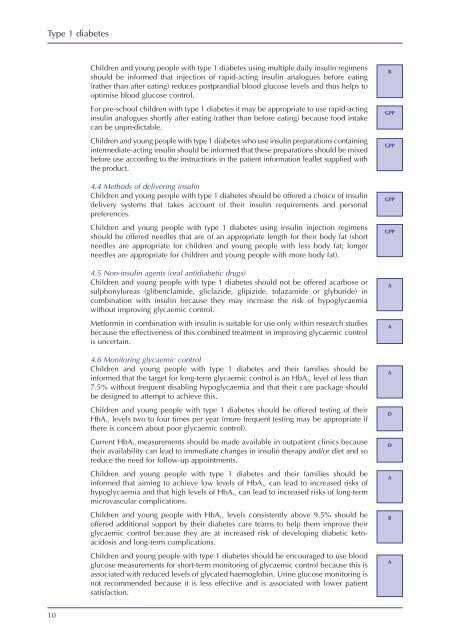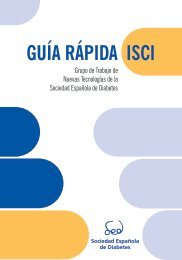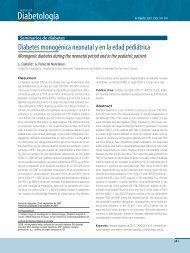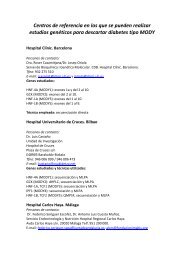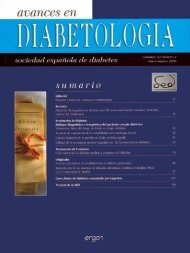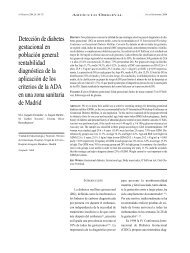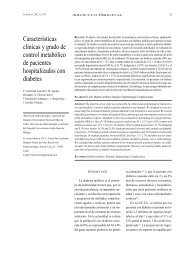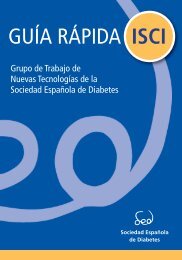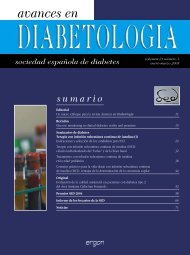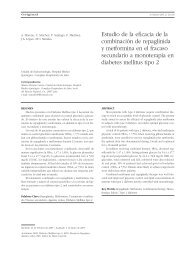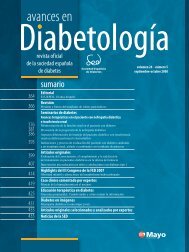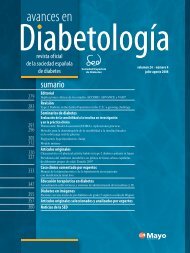Create successful ePaper yourself
Turn your PDF publications into a flip-book with our unique Google optimized e-Paper software.
<strong>Type</strong> 1 <strong>diabetes</strong>Children and young people with type 1 <strong>diabetes</strong> using multiple daily insulin regimensshould be informed that injection of rapid-acting insulin analogues before eating(rather than after eating) reduces postprandial blood glucose levels and thus helps tooptimise blood glucose control.For pre-school children with type 1 <strong>diabetes</strong> it may be appropriate to use rapid-actinginsulin analogues shortly after eating (rather than before eating) because food intakecan be unpredictable.Children and young people with type 1 <strong>diabetes</strong> who use insulin preparations containingintermediate-acting insulin should be informed that these preparations should be mixedbefore use according to the instructions in the patient information leaflet supplied withthe product.4.4 Methods of delivering insulinChildren and young people with type 1 <strong>diabetes</strong> should be offered a choice of insulindelivery systems that takes account of their insulin requirements and personalpreferences.Children and young people with type 1 <strong>diabetes</strong> using insulin injection regimensshould be offered needles that are of an appropriate length for their body fat (shortneedles are appropriate for children and young people with less body fat; longerneedles are appropriate for children and young people with more body fat).4.5 Non-insulin agents (oral antidiabetic drugs)Children and young people with type 1 <strong>diabetes</strong> should not be offered acarbose orsulphonylureas (glibenclamide, gliclazide, glipizide, tolazamide or glyburide) incombination with insulin because they may increase the risk of hypoglycaemiawithout improving glycaemic control.Metformin in combination with insulin is suitable for use only within research studiesbecause the effectiveness of this combined treatment in improving glycaemic controlis uncertain.4.6 Monitoring glycaemic controlChildren and young people with type 1 <strong>diabetes</strong> and their families should beinformed that the target for long-term glycaemic control is an HbA 1c level of less than7.5% without frequent disabling hypoglycaemia and that their care package shouldbe designed to attempt to achieve this.Children and young people with type 1 <strong>diabetes</strong> should be offered testing of theirHbA 1c levels two to four times per year (more frequent testing may be appropriate ifthere is concern about poor glycaemic control).Current HbA 1c measurements should be made available in outpatient clinics becausetheir availability can lead to immediate changes in insulin therapy and/or diet and soreduce the need for follow-up appointments.Children and young people with type 1 <strong>diabetes</strong> and their families should beinformed that aiming to achieve low levels of HbA 1c can lead to increased risks ofhypoglycaemia and that high levels of HbA 1c can lead to increased risks of long-termmicrovascular complications.Children and young people with HbA 1c levels consistently above 9.5% should beoffered additional support by their <strong>diabetes</strong> care teams to help them improve theirglycaemic control because they are at increased risk of developing diabetic ketoacidosisand long-term complications.Children and young people with type 1 <strong>diabetes</strong> should be encouraged to use bloodglucose measurements for short-term monitoring of glycaemic control because this isassociated with reduced levels of glycated haemoglobin. Urine glucose monitoring isnot recommended because it is less effective and is associated with lower patientsatisfaction.BGPPGPPGPPGPPAAADDABA10


